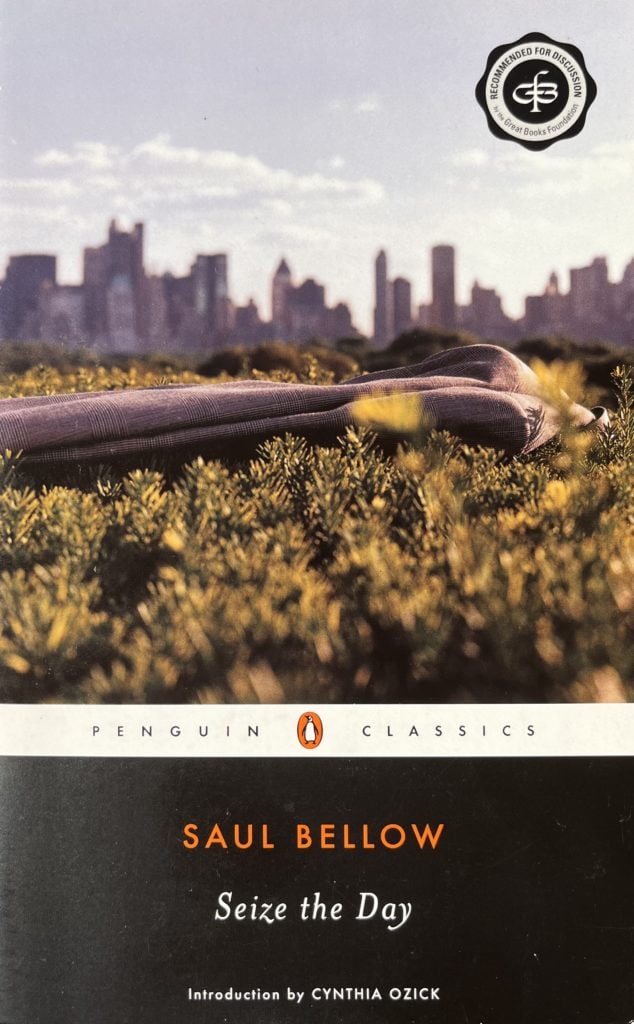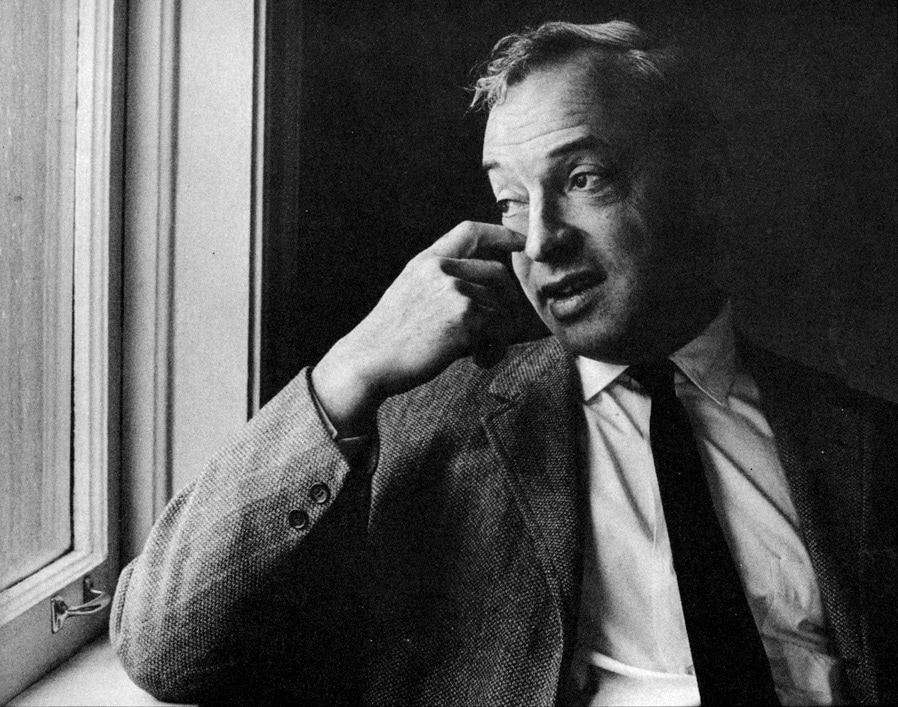With this article, we continue our series on the Nobel laureates whose names grace the 130+ streets of Laureate Park.
Some writers seem blessed with indelible fame, even if recognition emerges slowly. Herman Melville, for one example, garnered little praise during his lifetime. Not until the 1920s did critics crown Moby Dick as a literary masterpiece, and Melville’s stature within the pantheon of American authors has grown only steadily since. Other writers are not so lucky. To a casual reader five decades ago, the Canadian-American Saul Bellow appeared to tower over other practitioners of the novel. He had brought a freshness and blunt irreverence to fiction that had attracted readers hungering for raw, unfiltered depictions of the daily trials of modern life. With the appearance of Herzog in 1964, critics started to shower plaudits upon Bellow, and the publication of Mr. Sammler’s Planet in 1970 took on the contours of a genuine literary event, further adding to his burgeoning reputation as a writer of genius. By 1976, the year that the Swedish Academy conferred upon him the Nobel Prize for literature, Bellow stood shoulder to shoulder with the best of his craft.
Now, three decades into the 21st century, it is not unreasonable to ask whether Saul Bellow’s writing has endured the trials of time. We wonder. In 2015, the centenary of his birth, NPR insisted that Bellow’s prose “still sparkles” and that he maintains his commanding position as America’s finest novelist of the past century. The Adventures of Augie March, we are told, is the Great American Novel. That, though, reflects the views of the community of literary critics, whose tastes do not necessarily resonate with the reading public – even for those who enjoy an occasional difficult read. Googling “best American novelists” produces a surprising result: Bellow’s name is often hard to find in the sundry lists of outstanding authors that pop up on the web.
But no matter. Let’s try to answer this question about Bellow’s durability by peeking into three of his more popular novels and examining, if briefly, his approach to themes, characterizations and style.

In one of his earliest efforts, Seize the Day, Bellow narrates one day in the life of a middle-aged loser, Tommy Wilhelm, who has survived economically only through the exasperated kindness of his wealthy father. The two inhabit separate rooms in a hotel on Manhattan’s Upper East Side, circa 1955. Here, Bellow introduces one of his favorite themes, the exploration of human frailty. Estranged from his obdurate wife and two children, Tommy is unable to secure a divorce even after failing to build any semblance of a useful career. Illustrative of his immaturity is his recent pursuit of a half-baked dream to work as a Hollywood actor on the recommendation of a hack agent who, as later revealed, has no real connections in the West Coast film industry. Back in New York after his ill-advised Hollywood adventure, Tommy faces financial and emotional ruin, a condition his father declines to repair. His solution? Having befriended a charlatan psychologist who dabbles in “sure bets” in the stock market, Tommy stakes his remaining life savings on a long-shot investment in the commodities market. In Tommy’s muddled mind, the psychologist also offers him the promise of emotional healing. But on that day, the commodities market, you might say, seizes up, and Tommy’s life savings vanish. As our story closes, Tommy, having wandered into a church, is found weeping on the casket of a stranger, a scene that reminds us of his alienation from those around him and from life itself.
Much like The Catcher in the Rye or Daniel Keyes’ sci-fi classic Flowers for Algernon, Seize the Day faithfully captures the sights, sounds and daily bustle of mid-century Manhattan. If for no other reason, savoring the setting of that bygone Manhattan is worth the read.

Next, we have Henderson the Rain King, Bellow’s most popular work. This is a novel like none other, a tale impossible to pigeonhole. Eugene Henderson is a mild-mannered upstate New Yorker, an Ivy League grad on his second marriage, living an outwardly conventional life. Henderson dabbles as a part-time pig farmer but dreams of attending medical school, a project that both his ex- and current wife regard with derision. Despite his hefty inherited wealth and solid social status, Henderson is hounded by an inner voice that repeats “I want, I want, I want!” In a desperate bid to quiet that voice, Henderson on impulse buys a one-way passage to East Africa, joining an old friend’s travels on that continent. Recoiling at the extravagance of his friend’s traveling style, Henderson strikes out for the bush together with his newly hired native guide, Romilayu.
A first stop brings the travelers to a village inhabited by the Arnewi tribe, whose drinking water has been contaminated by a plague of frogs. Henderson is taken with the tribe’s aged queen, toward whom he demonstrates his adulation by kissing her wrinkled belly. The queen has shared with Henderson the secret of life in a native phrase signifying “I want to live.” In gratitude, Henderson promises to rid the village of their amphibian pests with a bomb he assembles with assorted shotgun shells and batteries found in his backpack. The bomb, however, destroys not only the frogs but the village cistern, the tribe’s only water supply. Under the cover of darkness, Henderson and Romilayu slip away from the village in shame.
The pair next travel to the mountain town of the Wariri tribe, where the welcome is initially coolish (they are lodged their first night in a hut occupied by a corpse). Henderson eventually gains an interview with King Dahful, who speaks perfect English, having been educated abroad. Henderson and Dahful spend hours in complex philosophical discussions (which, of course, do not advance the plot). Invited by Dahful to a ceremony to produce precipitation, Henderson is tricked into demonstrating his considerable strength by lifting a mountainous woman posing as a rain goddess. By passing this test, Henderson is unwittingly crowned the Rain King. The status gained with this title inserts Henderson into a dangerous palace plot, which ultimately causes Dahful’s death during a hunt for a lion whose spirit was to have solidified his claim to the throne. In the mix, Henderson and Romilayu are imprisoned but manage to bribe their way to freedom, sneaking away again after dark. Arriving in Switzerland, Henderson calls his wife to announce his renewed plans to study medicine, leaving unclear whether he has found spiritual fulfillment during his adventures in Africa.
Categorizing Henderson the Rain King is an exercise in futility. Is it comedy? Though the plot and characters are amusing, few scenes will cause you to laugh out loud. A knock on African life and culture? But Henderson ceaselessly praises the African royalty he meets in his travels and seems happier there than at home in the United States. (Bellow, incidentally, had not traveled to Africa before writing this book.) How about satire, in the manner of Evelyn Waugh’s Scoop or Black Mischief? Here again, though Rain King is wacky and weird, the narrative hardly spills over into satire.

Let’s now have a look at Mr. Sammler’s Planet. Artur Sammler is a Jewish immigrant from Poland, a Holocaust survivor haunted by his wartime partisan exploits, living modestly in New York City, and remains supported by the generosity of a wealthy cousin. Over the course of two days, Sammler contends with a collection of zany characters who cause him considerable heartburn. These include a pickpocket he espies plying his trade on a bus who later follows him into his apartment building and, in a crude display of dominance, exposes himself to Sammler; his own daughter, who steals the sole manuscript of an Indian scholar’s scientific paper on the colonization of the moon, pleading that she was only trying to “help” her father collect materials for a book she wants him to write about his one-time colleague, H.G. Wells; and a nephew who, convinced that his father (Sammler’s benefactor cousin) has stashed cash into the plumbing of his Westchester home, manages to burn down the house in his search for the phantom treasure. As a short story, this would be a wild and fun tale. The difficulty is that Bellow regularly interrupts the rhythm of the narrative with pages upon pages of abstruse philosophical musings that, for this reader at least, detract from the book’s intended message. Though Artur Sammler’s state of mind may not rise to the level of angst, he nonetheless suffers from that certain disquiet that tickles at our lives in the modern era.
Now that we have struggled through six Bellow novels (Ravelstein, Herzog and The Adventures of Augie March in addition to the three above), what is our verdict? Simply put, Bellow is not to everyone’s taste. Critics seem to love his work and apparently revel in the uber-intellectual references scattered throughout Bellow’s longer novels. Average readers, though, may find only occasional beauty in Bellow’s prose and are likely to wince at his obsession with the themes of sex and death, or his unfiltered depictions of the coarser aspects of daily life. In other words, you will probably enjoy Seize the Day and might like Henderson the Rain King. Just be wary about venturing any deeper into Bellowland.


